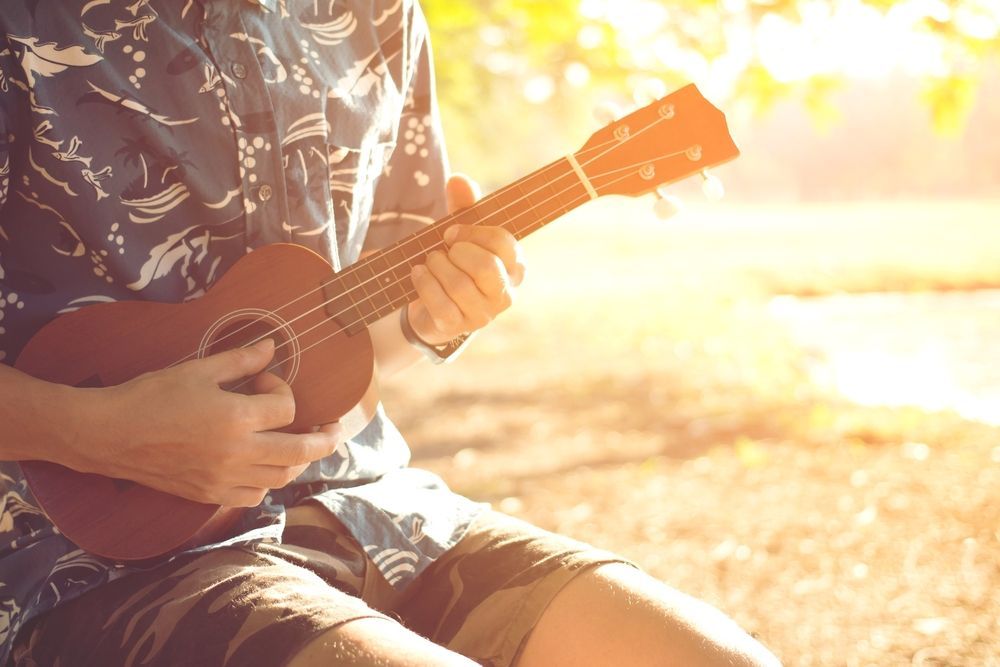
On the interior sides of the back and soundboard two horizontally-running struts are glued before the boards themselves are glued to the side. The side slats are steam-treated before being placed in a form and glued to interior wood blocks located at the top on bottom of the figure-eight. The figure-eight-shaped resonator of the ‘ukulele is constructed from thinly-shaven boards of koa wood. The ‘ukuleles pictured here were manufactured by two prominent Honolulu makers: Kamaka (founded in 1916 and still in business, this particular ‘ukulele made in the 1950s) and Kumalae (founded by Jonah Kumalae and in operation between 1911-1940 this ‘ukulele dates from around 1930). Many fine makers produce excellent instruments at the present time for local and global sale. In Hawaiian musical life today the ‘ukulele continues to be used to accompany modern hulas in schools and tourist venues, is found in mostly acoustic-instrument string bands playing contemporary Hawaiian folk music, is performed by virtuoso soloists in concerts and on recordings, and can be heard being strummed by amateur enthusiasts on beaches, in parks, and on front porches. The ‘ukulele has since become incorporated into many genres of music around the world, and there exists today in many countries clubs of enthusiasts that hope to one day visit and perform in Hawaii. There was a huge Hawaiian craze in the 1910s-1920s in America and throughout the cosmopolitan world, and the ‘ukulele figured prominently in it. There was a conscious effort on the part of early 20 th century tourism promoters to construct a strong connection between the ‘ukulele and Hawaii in the minds of people everywhere. Such ensembles not only played at the famous Hawaiian hotels of the day, they also toured to the Mainland and eventually made commercial recordings. Hawaiian music making of the late 19 th century had already been greatly Westernized, and the ‘ukulele was easily incorporated into ensembles of the period that typically included such instruments as the guitar, mandolin, violin, banjo, and double bass. Amongst the very early admirers of the instrument were members of the Hawaiian royal family, including King David Kalākaua, who introduced the use of the instrument for the accompaniment of hula. The most commonly accepted, but not the only, interpretation of this name is ‘jumping flea,’ imagery thought to have been used to describe the left hand finger movements of an early virtuoso of the instrument.

‘ ‘Ukulele’ is a Hawaiian word coined in the late 1800s as the name of this instrument.

Both instruments pictured here are soprano ‘ukuleles other more-or-less standard sizes are the concert, tenor, and baritone. The ‘ukulele (or, in English, ukulele) is a plucked/strummed box-lute chordophone currently distributed worldwide but most strongly associated with the Hawaiian Islands.


 0 kommentar(er)
0 kommentar(er)
